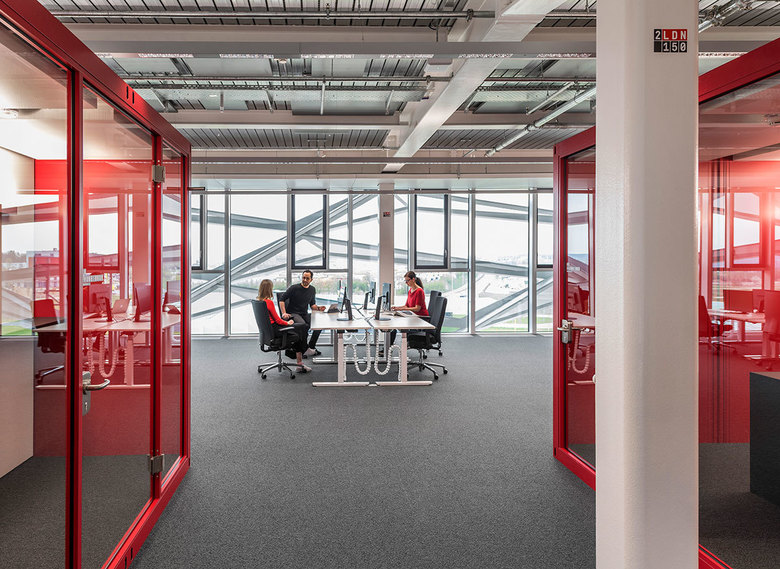Shading Reconsidered
Immobile sunscreens that are designed for a particular location and aim to amplify and optimize sunlight at certain times of the year rather than simply screening the sun are an integral element in three recent projects designed by Behnisch Architekten. Here we take a brief look at each project following from an interview with Stefan Behnisch on German-Architects.
Serving 400 scientists and researchers under one roof, this addition to a cancer research center in Lausanne was shaped by existing buildings as well as the growth of adjacent trees. Analysis led to facades that bend inward and outward — never vertical — and fixed aluminum sunscreens that bring sunlight deep into the plan via white painted surfaces on the top sides of the honeycomb screens.
A similar honeycomb facade wraps Arena, the new office and reception building on Adidas's World of Sports campus in Herzogenaurach. The design team articulated various aspects of the aluminum screen — opaque vs. perforated, the profile of shading elements, and the coating of the surfaces (30% gloss) — in order to avoid harsh light contrasts inside, optimize direct sunlight in the winter, and ensure views to the outside.
Set to house the John A. Paulson School of Engineering and Applied Sciences (SEAS) when it opens in fall 2020, the new Science and Engineering Complex (SEC) is another element in Harvard's rapidly growing Allston campus. The outer skin is made of thermoformed stainless steel shading elements mounted to tension rods. Each panel was modeled based on the direction of the facade in order to, like the two projects in Europe, shade the interiors during the summer but allow direct sunlight in the winter, and avoid harsh contrasts or glare throughout the year.









